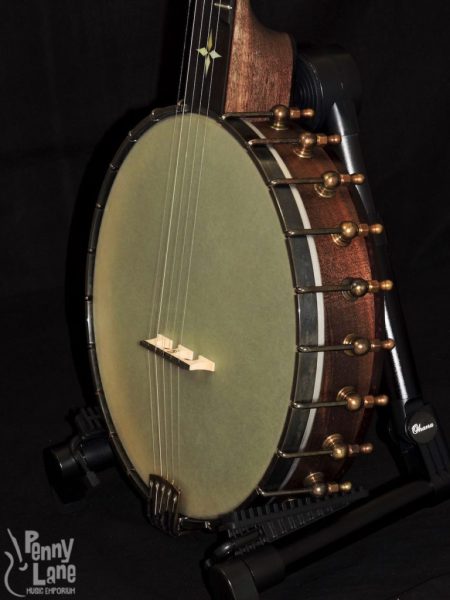

With setup, however, there are reproduceable differences that you can hear and feel in your banjo. While I have some opinions on the different fret lengths, they are just opinions with no real data to back them up other than the fact that many more high end banjos were made with 19 frets (for reasons not related very much to ITM) so many more 19 fret banjos sound better. This thread has morphed from a 17 fret vs. If your action is high, you’ll only exaggerate the intonation differences, because you’re bending the strings too far to get to the frets. Īnd you might also look at your neck angle setup. If you can get the tension to be similar on all four of the strings, that can help! I use Dan M’s java applet at. I highly recommend using a string tension calculator to figure out the best gauges for you banjo. But the flat bridge actually worked out the intonation issues as well - strange! I had some intonation issues with that, and went to a flat Snuffy bridge (for playability reasons). My Ome has a radiused fingerboard, and originally came with a radiused Snuffy Smith bridge. String gauge, the gauge of the core of the wrapped string, string tension, and action height all come into play, and on several of my vintage banjos, I ended up with the bass end of the bridge slanted back. You have to take a lot of things into account when dealing with intonation problems on the G string. Other than that, it is simply a well made bridge. In looking at the bridge, I can’t tell you what the difference is, other than the fact that the bridge leans back toward the tailpiece a bit. I have tried about 30 different bridges on several different banjos, including about 20 bridges of different woods made by our own Mike Keyes, but the Snuffy is all around the best sounding bridge of them all. The question about the difference between a Snuffy Smith bridge and all the others is a good one. Re: Switching from a 17 fret banjo to a 19 fret banjo - any regrets? Might be an underlying set up problem with my banjo, but it might be worthwhile checking out the bridge postion on your own machine, Sean. My bridge position does look noticeably odd to my eyes, but the banjo tuning I’m sure is much better. I made this adjustment a few weeks back now & I’m much happier with playing on the G as a reult. I found I had to place my bridge at a surprisingly sharp angle to have the 12 fret of the G in tune with open. G however was considerable out at this position, and working back not quite right at the 5th (hah, not just slopy technique). The 12th fret E and A were spot on and D fine. However, recently investing in one of those new fangled vibration tuner thingies (I know that is a can of worms, but it makes much easier initail tuning of a mandolin in a noisey pub) I checked intonation up the kneck it was clear to me that there was a problem with set up. I always put it down to technique, (and still place much of the blame there). C/C# though, they never felt right, never seemed quite in tune.

LIke Sean, I’ve never been happy with down the years playing on the G. I dig out the 19 fretter for occasional work outs and take it to ceilis, primarily so that my wife doesn’t think I don’t value her present (it is a little bit too showily decorated for me to feel comfortable with it down the pub, I like to sink into the background). My playing is better on the 17 fretter, possibly partly due to familiarity, but if I play the longer scale for a couple of days (or hours) then switch back the 17 fretter seems so much easier to play.I generally have the smaller scale lying about the house outside the case and for session playing. The tone is good on both, although I think better on the 19 freter, but I like the contast in sounds. I’m not sure if the bassiness is _entirely _ down to the extra length though I do think part of the different sound is due to it being a different model. I like both, the 19 fretter has a great bass sound but feels a little weak, on balance at least, on the e-string. I was given a 19 fretter, also from TC but a more expensive model, as a big surprise present a couple of years back. I play a 17 fretter from Tommy Cussans that I love. I’d be interested in this as I recently adjusted my bridge angle radicaly in an attempt to improve G string intonation (below). When I google I get a zillion hits to guys selling the things, but I can’t make out what distinguishes them from the run of the mill banjo bridge. What is different about a Snuffy Smith bridge?


 0 kommentar(er)
0 kommentar(er)
